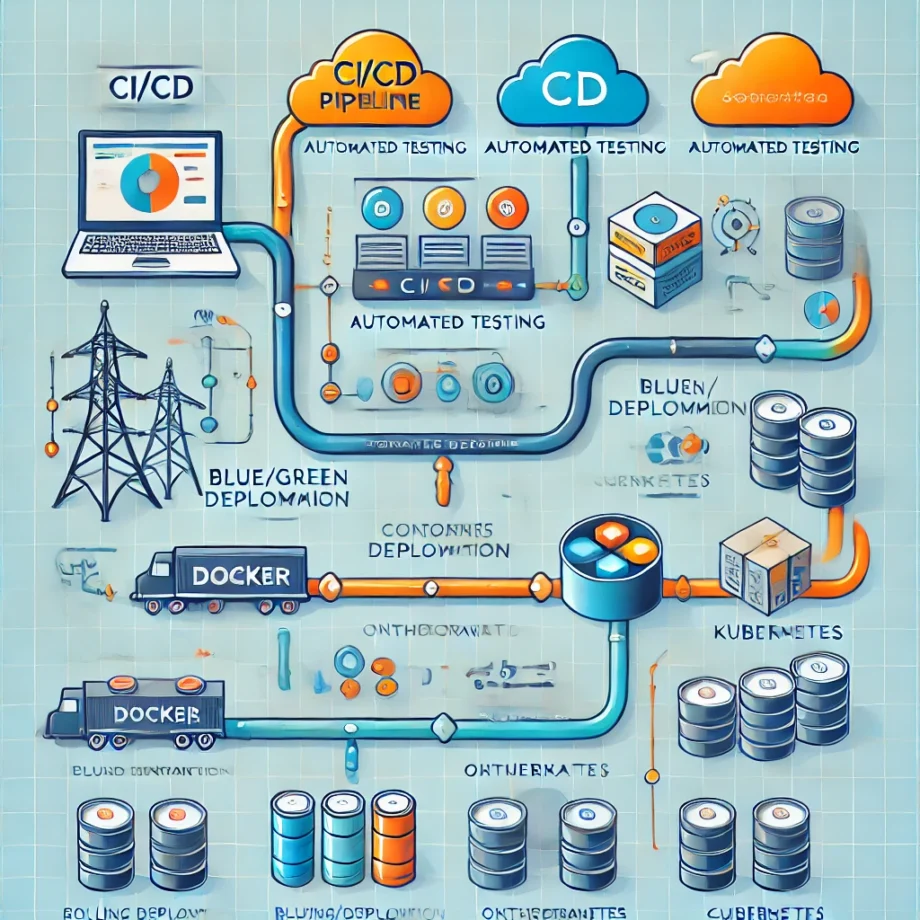Software deployment is a critical phase in the software development lifecycle. It’s not just about moving code to production—it’s about ensuring that the transition is smooth, efficient, and minimizes disruptions. A well-planned deployment process can significantly enhance user satisfaction, system reliability, and operational efficiency. Here’s everything you need to know about software deployment, from strategies and tools to common pitfalls.
What to Consider When Deploying Software
Effective software deployment requires meticulous planning and attention to various factors:
- Infrastructure Readiness:
- Verify that servers, databases, and network configurations are ready for the new software.
- Ensure adequate capacity to handle anticipated traffic or load spikes.
- Dependency Management:
- Confirm that all required libraries, APIs, and external services are compatible and available.
- Use tools like dependency checkers to identify and resolve potential conflicts.
- Environment Consistency:
- Standardize development, testing, staging, and production environments to avoid environment-specific bugs.
- Leverage containerization tools like Docker for consistent environments.
- Automation:
- Automate as much of the deployment pipeline as possible to reduce manual errors. Tools like Jenkins, Gitlab, and Azure DevOps streamline CI/CD pipelines.
- Monitoring and Logging:
- Implement robust monitoring to identify issues early during and after deployment.
- Ensure logs are centralized and accessible for troubleshooting.
- Security:
- Harden deployment pipelines against vulnerabilities. Use secrets management tools to protect sensitive data like API keys and credentials.
- Rollback Plan:
- Always prepare a rollback strategy to revert to the previous version in case of failure.
- Automate rollback procedures to minimize downtime.
Software Deployment Techniques
- Manual Deployment:
Suitable for small applications or systems with low change frequency. However, it is prone to errors and doesn’t scale well. - Automated Deployment:
A must for modern systems, automated deployment reduces human error and ensures consistency. Popular tools include Ansible, Chef, and Terraform. - Continuous Deployment (CD):
Extends CI/CD pipelines by automatically releasing every successful build to production. Ideal for environments where small, frequent updates are common. - Infrastructure as Code (IaC):
Tools like Terraform and AWS CloudFormation allow you to define and provision infrastructure in code, ensuring repeatability and minimizing configuration drift.
Deployment Strategies
Choosing the right deployment strategy depends on your application, user base, and business requirements. Below are some popular strategies:
- Basic Deployment:
The simplest approach—deploy everything at once. It’s straightforward but risks complete downtime if something goes wrong. - Rolling Deployment:
Updates portions of the environment incrementally, gradually replacing old versions with new ones. This minimizes downtime but requires careful monitoring. - Blue/Green Deployment:
Runs two identical environments (blue and green). The blue environment serves live traffic, while updates are deployed to green. Once validated, traffic switches to green. This approach ensures zero downtime. - Canary Deployment:
Rolls out updates to a small subset of users first. If successful, the deployment gradually expands to the full user base. This strategy reduces risk and isolates issues. - Shadow Deployment:
Routes real-world traffic to the new version without impacting end users. It’s useful for testing performance and compatibility under production-like conditions. - Feature Toggles:
Deploys new code with features turned off. Features can be toggled on gradually, providing more control over user exposure.
Deployment Tools and Platforms
- CI/CD Pipelines: Tools like Jenkins, GitLab CI/CD, and CircleCI automate the entire deployment process, from building to releasing.
- Containerization and Orchestration: Docker and Kubernetes provide robust solutions for deploying applications in a consistent and scalable manner.
- Monitoring Tools: Solutions like Prometheus, Grafana, and Datadog help monitor application health and performance during and after deployment.
- Cloud Providers: Platforms like AWS, Azure, and Google Cloud offer deployment services, including Elastic Beanstalk, Azure App Services, and Cloud Run.
Common Issues During Software Deployment
Even with meticulous planning, things can go wrong. Here’s what to watch out for:
- Configuration Mismatches:
Inconsistent environment configurations lead to unexpected bugs. - Database Migration Failures:
Schema changes or data migrations can cause downtime or data corruption. - Dependency Conflicts:
Mismatched versions of libraries or APIs can break functionality. - Performance Degradation:
New features or updates may introduce latency or resource bottlenecks. - Insufficient Monitoring:
Without proper monitoring, issues may go undetected until users report them. - Rollback Failures:
Poor rollback strategies can exacerbate problems during recovery. - Security Risks:
Vulnerabilities introduced during deployment can lead to breaches. - Setup of certificates
Tips for Successful Software Deployment
- Test Thoroughly:
Use unit tests, integration tests, and load tests to ensure the software performs well in all scenarios. - Stage Deployments:
Deploy updates to staging environments before production to identify issues early. - Communicate with Stakeholders:
Notify teams and users about planned deployments to manage expectations and minimize disruptions. - Enable Observability:
Monitor logs, metrics, and traces to quickly detect and resolve issues. - Learn from Failures:
Conduct post-mortems for failed deployments to improve future processes.
Conclusion
Software deployment is not just about moving code; it’s about delivering value to users reliably and efficiently. By considering factors like infrastructure readiness, leveraging automation tools, and choosing appropriate deployment strategies, you can reduce risks and enhance deployment outcomes. Stay prepared for potential issues and always have a rollback plan in place.
Investing in a well-thought-out deployment process ensures your software can evolve seamlessly, keeping users satisfied and systems stable.

